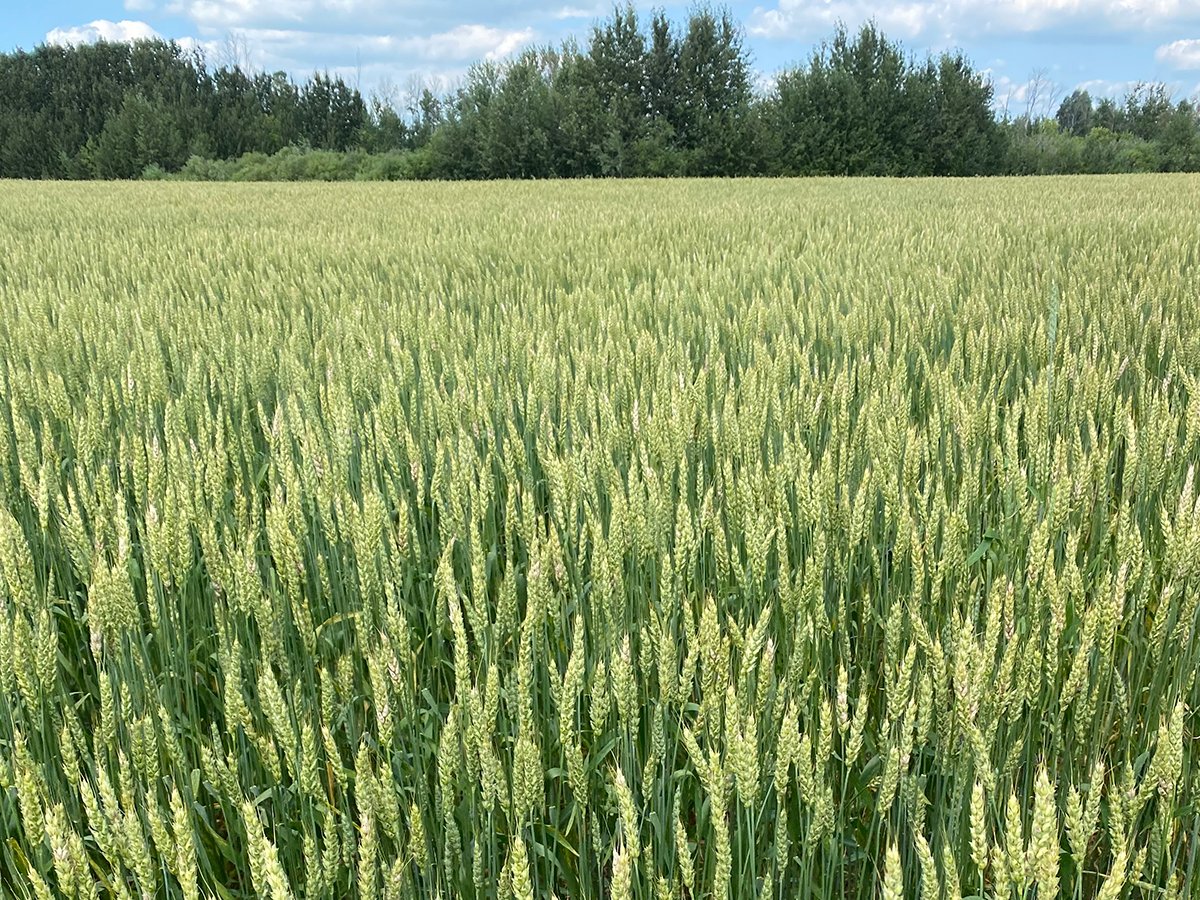Canada has the potential to post a new record for wheat exports this crop year, and the outlook for next year might look a little brighter as crop problems develop in other countries.
However, there is no guarantee that the emerging problems will continue and, as always, it comes down to weather.
Chicago wheat futures turned higher May 13-21, breaking a general downward trend since hitting a 2025 high in February.
Read Also

Flax sector sees omega-3 opportunity
SASKATOON — A global shortage of omega-3 oils could be an opportunity for the flax sector, says an industry official….
The rally petered out by week’s end. More weather problems will be needed to get it going again.
One of the sparks for the rally was weather in China that threatens its winter wheat crop and apparently caused authorities to offset the risk with a burst of wheat buying from Canada and Australia.
China might also have decided to stock up because wheat futures had hit the lowest level in years.
Dryness developed over the past few weeks in part of the North China Plain, where most of China’s winter wheat is produced.
The situation worsened last week when temperatures soared to the low 40s C, a record high for the time of year, accompanied by strong dry winds.
The crop is nearing maturity, and harvest usually begins at the end of this month.
The China Daily news service said technicians were closely monitoring crop conditions and using irrigation to maintain yeilds
There is no clear assessment of how much, if any, damage was caused by the dry heat.
A few days before the latest heat wave, Reuters reported that Australian wheat traders said China was buying 270,000 tonnes of wheat from Australia and 200,000 tonnes from Canada.
China has deeply reduced wheat imports from all sources this crop year because last year’s harvest was good.
Nevertheless, Canada has retained a good share of the smaller pie with close to 840,000 tonnes of wheat exports to China in the crop year to March, according to the Canadian Grain Commission.
That makes it the third largest buyer after Indonesia and Japan. Last year China was by far the largest buyer, taking 2.28 million tonnes by the end of March.
Canada has found a wide variety of wheat buyers this year, and as of week 40, May12-18, it shipped 17.42 million tonnes, surpassing the pace of last year at the same point when 17.11 million tonnes had been shipped.
Last year was a record for Canadian wheat exports, so there is a chance we will post a new record high this crop year.
Another support for wheat prices last week were concerns that the U.S. hard red winter wheat crop is suffering a larger than usual outbreak of wheat streak mosaic virus.
Also, it is dry in northern Kansas and much of Nebraska.
However, expectations are for a larger crop than last year.
The Wheat Quality Council’s Hard Winter Wheat Tour on May 15 estimated the Kansas crop at 338.5 million bushels, up from last year’s tour forecast of 290.4 million bu. The tour’s estimate was a little lower than the U.S. Department of Agriculture forecast of 345 million bu.
These forecasts were based on good weather extending to the beginning of harvest late this month.
However, last week the USDA lowered its assessment of the good-to-excellent percentage by two percentage points to 52 per cent, indicating a slight deterioration.
That is still a little better than last year, when the good-to-excellent rating was 49 per cent.
Rain is expected this week, and that could lift conditions again, so I think the winter wheat crop is not going to suddenly go downhill.
Meanwhile, I think the market will soon note that the spring wheat crop is in good shape.
The northern U.S. Plains and southern Canadian Prairies got good rain last week, and with a good percentage of wheat already in the ground, establishment should be good.
The news wires last week also reported that the Russian region called Rostov, a major winter wheat area east of the Black Sea, had declared an emergency after spring frosts and warned of yield losses if rain did not soon arrive.
However, that does not mean all Russia wheat areas are in trouble.
Forecaster Sovecon now thinks the 2025 Russian wheat crop will reach 81 million tonnes, up from 79.8 million tonnes in its previous outlook.
However, it warned that persistent dryness in many regions could cause crop losses. Light rain fell in many areas last week, but that did not make up for the deficit.
The current forecast of 81 million would be similar to last year’s crop but a big drop from the 91.5 million produced in 2023.
These stories indicated a worry about dry weather leading up to winter crop harvest in Russia, but most precipitation modelling for the next few weeks that I have seen do not show extreme dryness in that area.















